Harmonious label family - innovations in the Swiss building labels
From fall 2023, much will be new with SNBS and Minergie: The supporting organizations have harmonized the Swiss building labels. At the beginning of June 2023, the Swiss Federal Office of Energy and the organizations informed the public. There is now a central platform where applications for certification can be submitted. Energeiaplus shows what is new and why.
The most important innovations:
- Minergie and SNBS now also for sites.
The label 2000-Watt-Areal will be replaced. The basis for calculating energy consumption and emissions has been standardized. - Tightening of the Minergie standards - for own electricity production, greenhouse gas emissions during construction, heating requirements and thermal protection in summer
- A single certification platform for processing applications
- One operating organization for certification
The label family at a glance:

Graphic: Minergie
Who benefits from these innovations and why these adjustments at all? Energeiaplus wanted to know this from Christian Stünzi of Minergie. He has accompanied the harmonization process.
I bought an older single-family house. Now I'm due for a more extensive renovation so that my house meets the latest requirements in terms of energy efficiency and sustainability. As a homeowner, what are the benefits of these new building labels?
Answer: The labels are now perfectly coordinated and permeable. First of all, it is best to do a GEAK Plus - and thus know how much energy the building needs and how it could be renovated. The GEAK Plus is mandatory if you want to receive a subsidy of over 10,000 Swiss francs. After the renovation, the homeowner can apply for Minergie certification. The label certifies an independent quality assurance for the implementation and there is also an added value in terms of comfort. For large-scale projects, you can still have your building certified with the SNBS-Hochbau label in order to cover sustainability issues in their entirety.
To what extent do the label innovations facilitate the work of planners and architects?
Answer: All labels are now based on the calculation principles of the GEAK, whether for energy or CO2 emissions. And the new label platform will also standardize the recording of evidence and the certification process. In my view, however, the greatest added value is the clear positioning of the three brands GEAK, Minergie and SNBS in terms of their impact on the future of energy and climate. The labels are comparable and coordinated with each other, but still leave decision-makers the freedom to choose the label that suits them and the building project.
Uniform bases for calculating energy consumption and greenhouse gas emissions make sense and create transparency. What were the biggest challenges in the process?
Answer: Harmonization always means that you have to adapt and renew yourself. The stumbling blocks were the many interdependencies of the individual carriers that one discovers when trying to harmonize. How do you weight energy? What factors for greenhouse gas emissions does one use? These are issues that needed to be addressed. The question of who is "right" often comes up in the process. Some compromises were necessary on all sides to find the highest common denominator.
What is happening with the regional certification bodies? Minergie, for example, has one in almost every canton.
Answer: Very little is changing in the people and institutions that inspect and certify the projects. The regional proximity to the customers is important and will be maintained. What is new is that verification and certification are completely digital and are handled on the joint label platform.
Will certification now be more expensive?
Answer: Across all standards and building categories, the fees will increase slightly, for the first time since 2017. However, the time and effort required to prepare the certificates will decrease, and in the case of the ECO supplement and SNBS building construction, even significantly, thanks to simplifications in content.
Accordingly, the total costs for planning and certification should not increase.
One label is being dropped: the 2000-watt area. This caused critical reactions when it was announced in March 2022. Can sites with this label now simply switch to Minergie sites or SNBS sites? Or what do they have to do? What does that mean in terms of costs?
Answer: Yes, the SNBS and Minergie sites are the official follow-up solutions for the forty or so 2000-watt sites that exist to date. The change is of course voluntary, the Federal Office of Energy takes over a part of the costs for the follow-up solution. The essential characteristics of the 2000-watt site are reflected in the two labels. The SNBS and Minergie areas are officially considered equivalent in terms of energy and climate protection measures, which is useful for municipalities that have stipulated the 2000-watt area in development plans or special use plans.
Why all this reorganization of the building and site labels?
Answer: There is still a great deal of untapped potential in the building sector, and it is already possible to build much more sustainably than the minimum legal requirements. It is important that the GEAK, Minergie and SNBS labels move forward together, use synergies, calculate in a uniform way and join forces. The process of the last two years has brought us member organizations closer together and confirmed our common goals of moving forward and making a significant contribution to climate and energy policy.
Ecobau or the Swiss Society of Engineers and Architects (SIA) or even foreign labels are not part of the new label family. Why not?
Answer: That is not the case. The ecobau association has revised the ECO supplement in good cooperation with us and is involved in the label family both technically and through representation in association bodies. The same applies to the SIA: networking within the institutions is close, and wherever possible the labels are based on SIA standards and codes of practice. Foreign labels are not represented because they are not based on Swiss standards and calculate according to the harmonized rules of the GEAK standardization.
Minergie has established itself as a label, SNBS is somewhat less well known. Will only these standards be used for construction or renovation in the future? Your forecast?
Answer: The SNBS is now also well known in its market segment; on the street, people are more familiar with Minergie or, increasingly, the GEAK. It is conceivable that soon every building will have a GEAK classification, with categories A to G, similar to the energy labels for electrical appliances. It will probably be a long time before all new buildings and renovations meet the SNBS standard or a Minergie standard. However, this should be the case by 2050 if we want to achieve the goals of the Paris climate agreement.
 Minergie
Minergie

 ©NosorogUA/Shutterstock
©NosorogUA/Shutterstock Glenn Carstens Peters/Unsplash
Glenn Carstens Peters/Unsplash
Neuste Kommentare